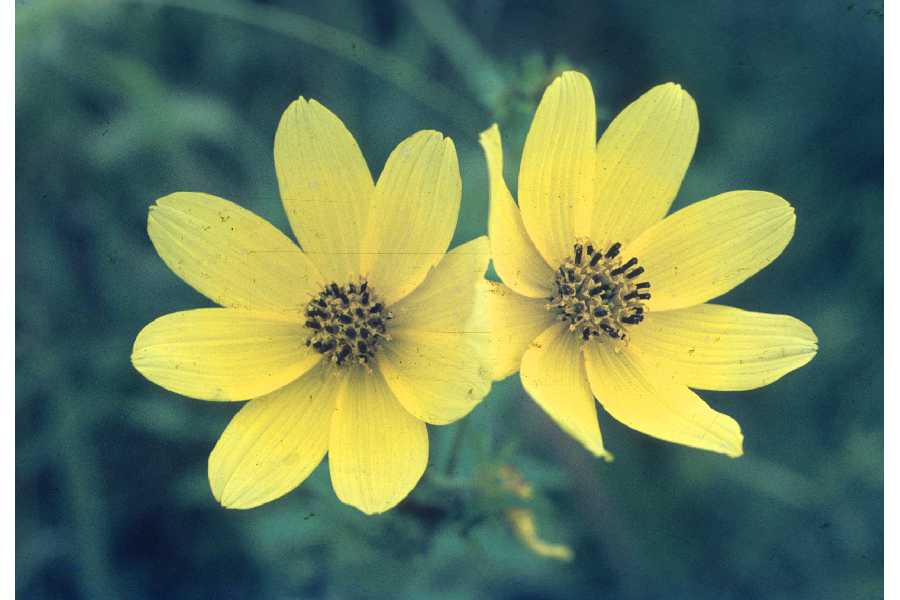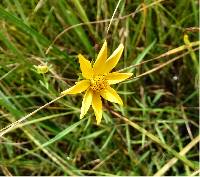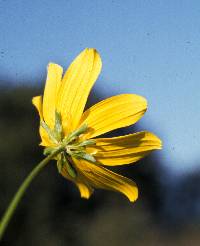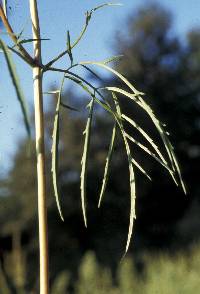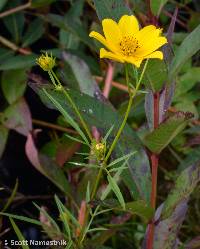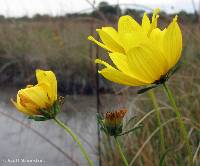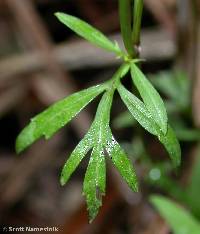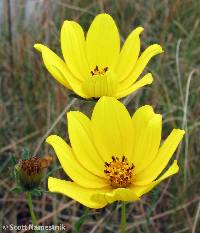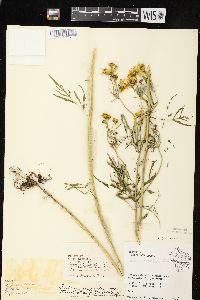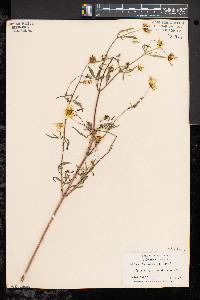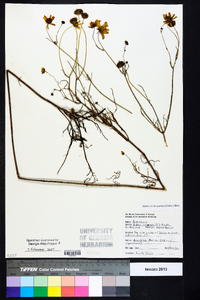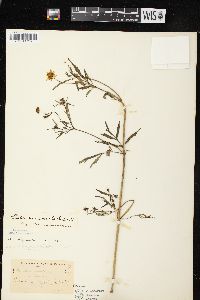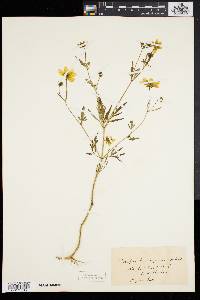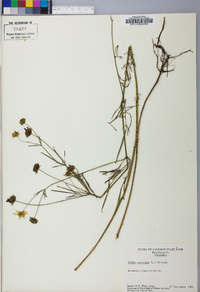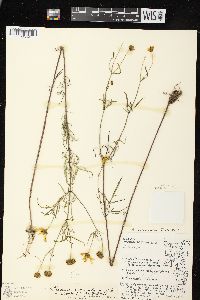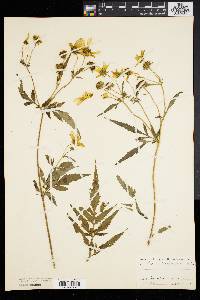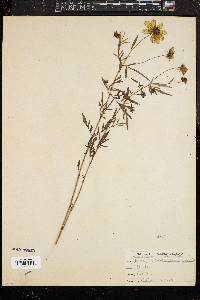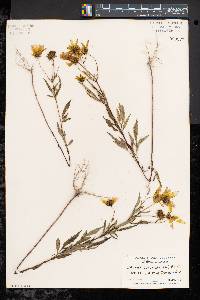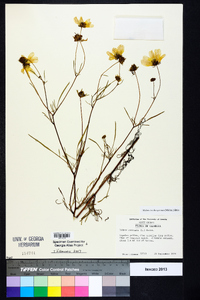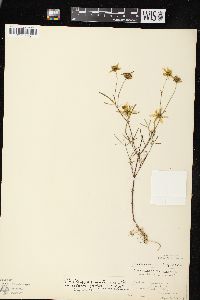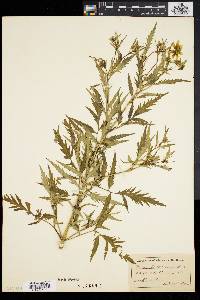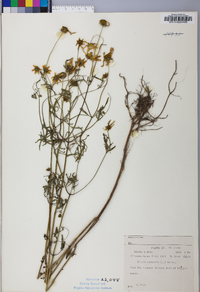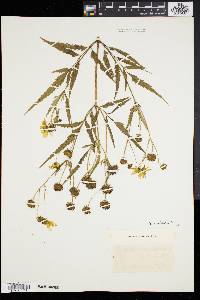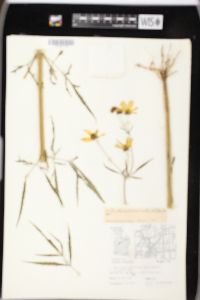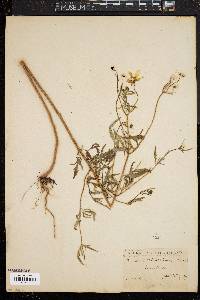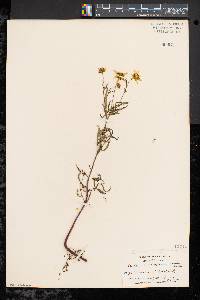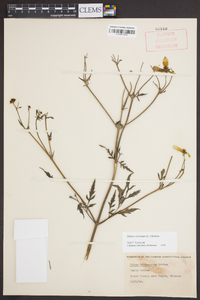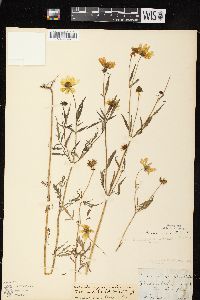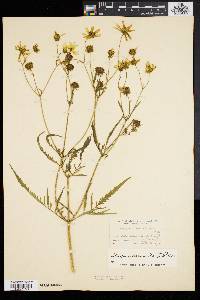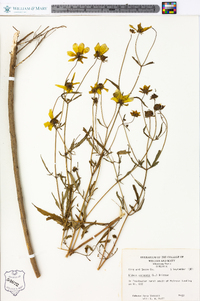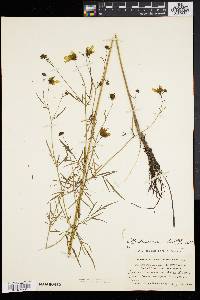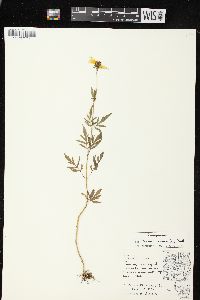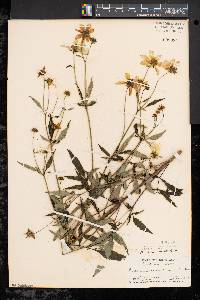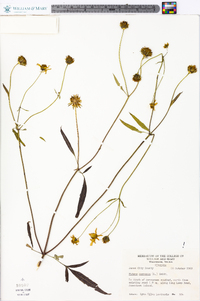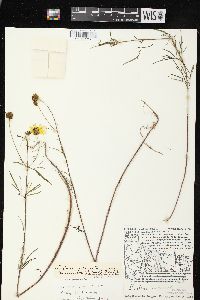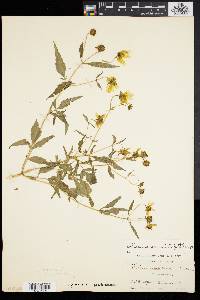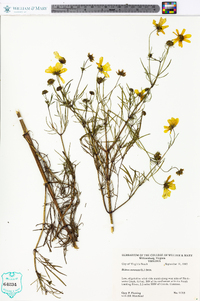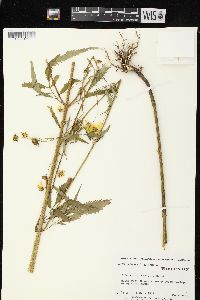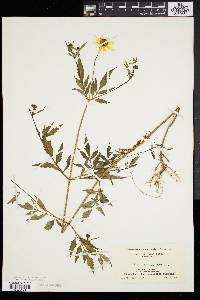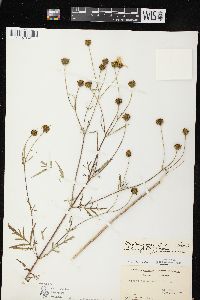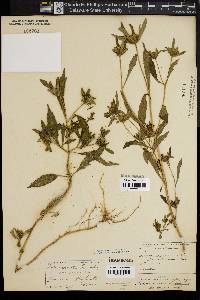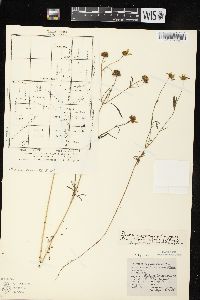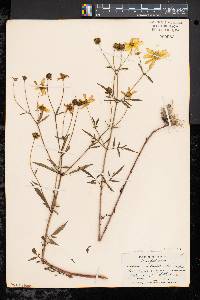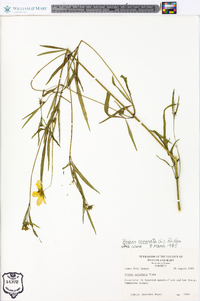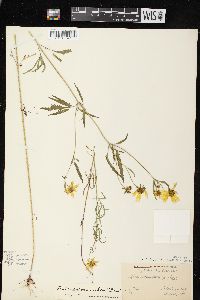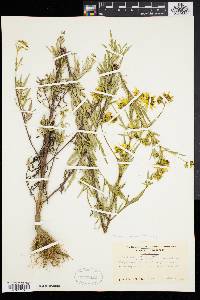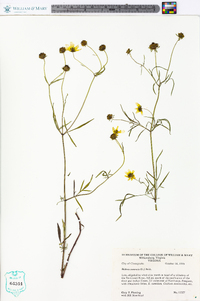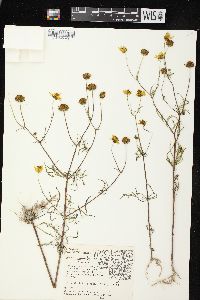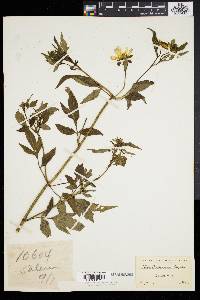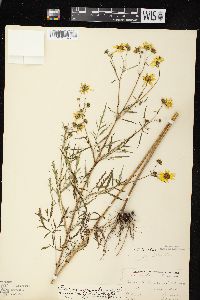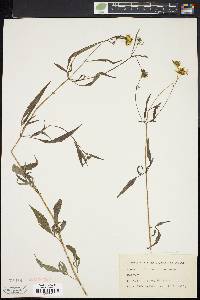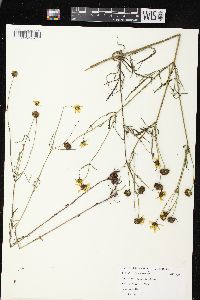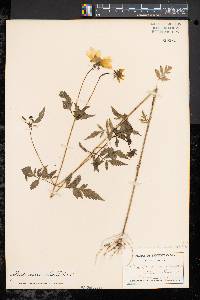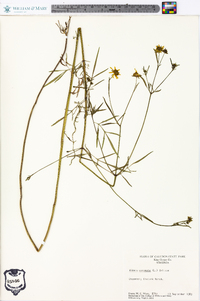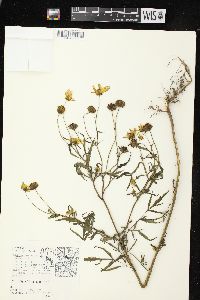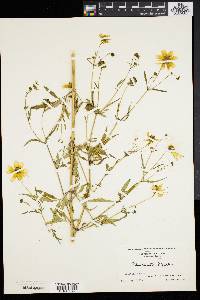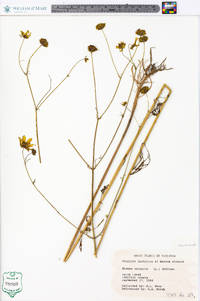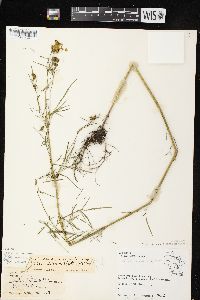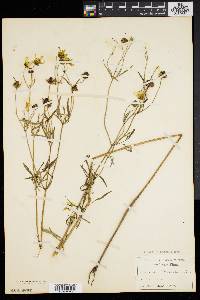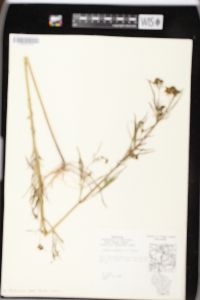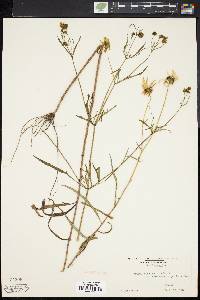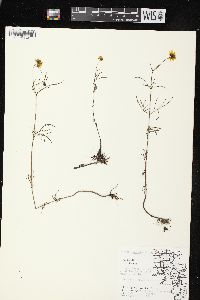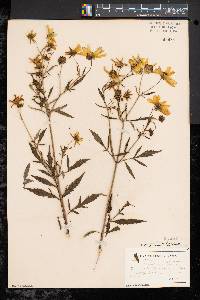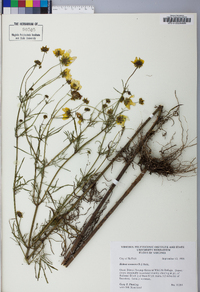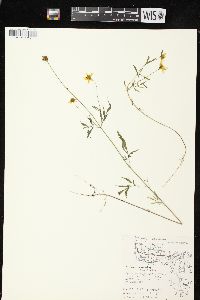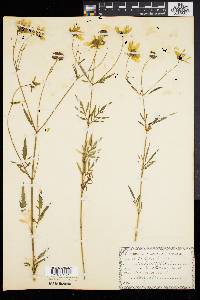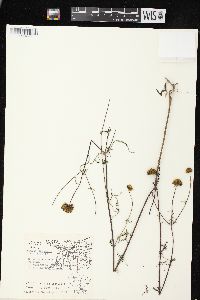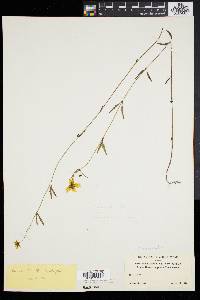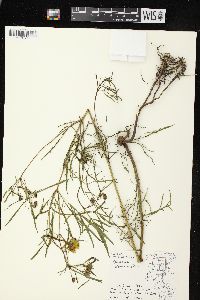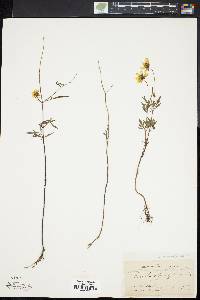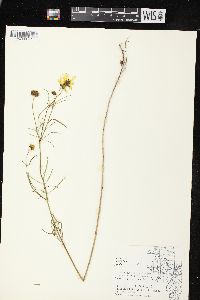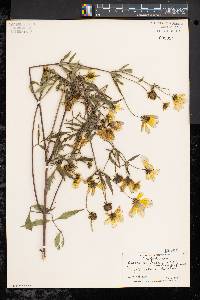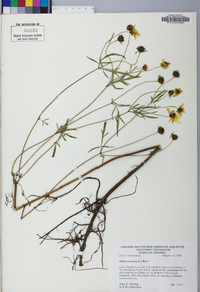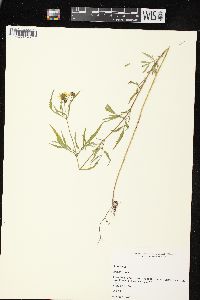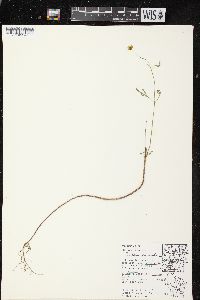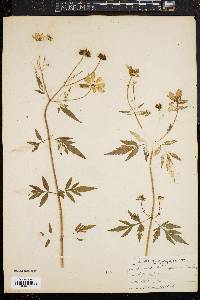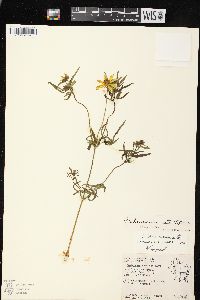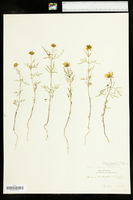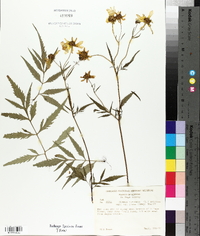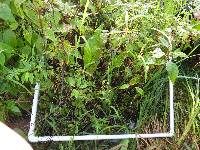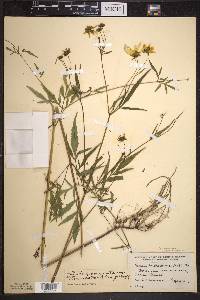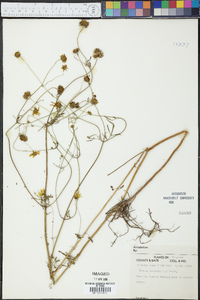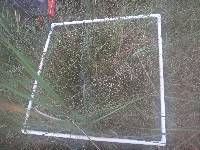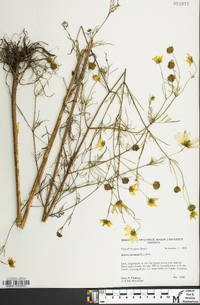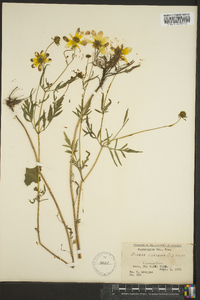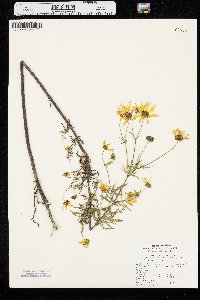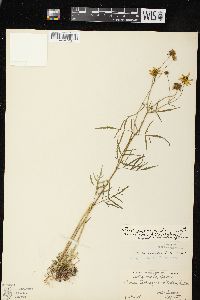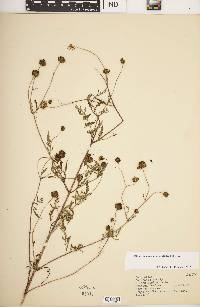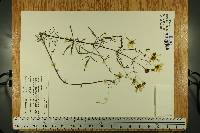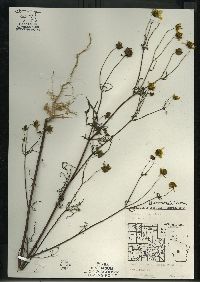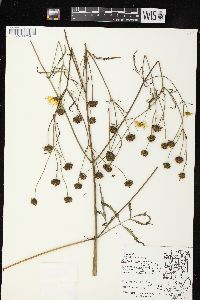Bidens trichosperma
|
|
|
|
Family: Asteraceae
crowned beggarticks, more...Crowned Beggarticks
[Bidens coronata (L.) Britton, moreBidens coronata var. brachyodonta Fernald, Bidens coronata var. tenuiloba (A. Gray) Sherff, Bidens coronata var. trichosperma (Michx.) Fernald] |
Annuals (biennials), (15-)30-50(-150+) cm. Leaves: petioles 5-20+ mm; blades ± deltate to ovate overall, 40-75(-150) × 10-45(-130) mm, usually laciniately 1-2-pinnatisect, ultimate lobes (3-)5-7+, oblanceolate or lanceolate to linear, (5-)10-30(-80+) × (1-)4-8(-12+) mm, bases cuneate, ultimate margins incised, dentate, serrate, or entire, little, if at all, ciliate, apices acute to attenuate, faces glabrous or ± hirtellous to strigillose. Heads usually in open, ± corymbiform arrays. Peduncles 20-150 mm. Calyculi of (6-)8(-11), ascending to spreading, spatulate to linear, sometimes ± foliaceous bractlets or bracts 3-10(-18) mm, margins sometimes ciliate, abaxial faces glabrous. Involucres hemispheric or broader, 4-6(-8) × 6-12 mm. Phyllaries 6-8(-10), oblong, 3-8 mm. Ray florets (7-)8-9; laminae golden yellow, 10-30 mm. Disc florets 40-60(-80+); corollas yellow, 3-5 mm. Cypselae blackish or brown, flattened, narrowly cuneate, outer 3-6 mm, inner 5-9 mm (lengths mostly 2.5-4 times widths), margins antrorsely barbed or ciliate, apices ± truncate, faces obscurely 1-nerved, sometimes tuberculate, glabrous or sparsely hispidulous; pappi of 2 erect, ± patently barbed awns or scales (0.4-)1-2.5(-4) mm. 2n = 24. Flowering Aug-Oct. Marshes, estuaries; 0-300 m; Ont., Que.; Ala., Ark., Conn., Del., Fla., Ga., Ill., Ind., Iowa, Ky., Md., Mass., Mich., Minn., Miss., Mo., Nebr., N.J., N.Y., N.C., Ohio, Pa., R.I., S.C., S.Dak., Tenn., Va., W.Va., Wis. Plants here called Bidens trichosperma have long been known as B. coronata (Linnaeus) Britton (or Britton ex Sherff). Alas, Britton´s B. coronata (1913) is a later homonym of B. coronata Fischer ex Colla (1834) and cannot be used.
Glabrous annual or biennial, 3-15 dm; lvs to 15 cm, pinnately parted, with mostly 3-7 lance-linear to linear, incised-dentate to entire, acute or acuminate segments; petioles 0.3-1.5 cm; heads radiate, with ca 8 rays 1-2.5 cm, the disk 8-15 mm wide; invol glabrous or nearly so, the 6-10 outer bracts linear or linear-spatulate, sometimes ciliate-margined, very rarely exceeding the disk; achenes flat or nearly so, narrowly cuneate-oblong or the inner cuneate-linear, mostly 5-9 mm and 2.5-4 times as long as wide, dark, smooth or hairy, the margins antrorsely ciliate; pappus of 2 short, erectly setose strong awns or awn-scales mostly 1-2 mm (seldom obsolete); 2n=24. Wet places; Mass., s. Ont., n. Wis., and e. Minn., s. to N.C., Ky., and Neb. Aug.-Oct. (B. trichosperma) Gleason, Henry A. & Cronquist, Arthur J. 1991. Manual of vascular plants of northeastern United States and adjacent Canada. lxxv + 910 pp. ©The New York Botanical Garden. All rights reserved. Used by permission. From Flora of Indiana (1940) by Charles C. Deam Fernald (Rhodora 40: 348-351. 1938) has divided this species into four varieties. His publication came too late for me to study our Indiana specimens, although I find we have both the typical form and var. tenuiloba (Gray) Sherff. Frequent in the lake area and local southward. In the lake area before drainage it sometimes covered acres of marsh land and was the source of "Spanish Needle" honey. Where it is found, it usually forms dense colonies. Its habitat is in marsh land, tamarack bogs, springy places, and low places along streams and ditches. Very narrow-leaved forms are regarded by some authors as belonging to a variety, but I have not recognized this vegetative fluctuation. ...... Indiana Coefficient of Conservatism: C = 5 Wetland Indicator Status: OBL |
|
|
|

